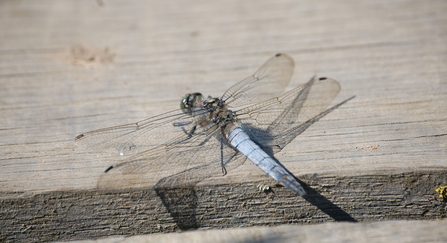
Black-tailed skimmer by Scott Petrek
Standing water found in Suffolk’s ponds is vital for the region’s population of dragonflies and damselflies, particularly priority species such as the large red damselfly, common darter and broad-bodied chaser dragonflies.
But with the effects of climate change now kicking in and habitat shrinking due to drainage, development and neglect, these iridescent predators face an uncertain future.
Monitoring dragonflies
The British Dragonfly Society (BDS) are currently working on a new Atlas of the Dragonflies of Britain, to help determine the changes that have taken place to Britain’s dragonflies since the last national Atlas was completed in the early 1990s.
As part of the wider scheme, observers in Suffolk have been working hard for the last two years and a provisional Atlas of the County’s dragonflies has been produced.
This provisional Atlas reveals a number of important features, such as the improving fortunes of Norfolk Hawker – one of Britain’s rarest dragonflies.
The spread of several species that were almost unknown in Britain only a decade ago is also very obvious, with many County records of the Small Red-eyed Damselfly and also a rush of sightings of the Willow Emerald Damselfly from the Wickham Market/Ipswich/Felixstowe area during 2009.
However, on the negative side there are suggestions that some species, most notably the Variable Damselfly, may be in slow decline.
Further details or guidance can be obtained from Adrian Parr, or from the BDS website.
